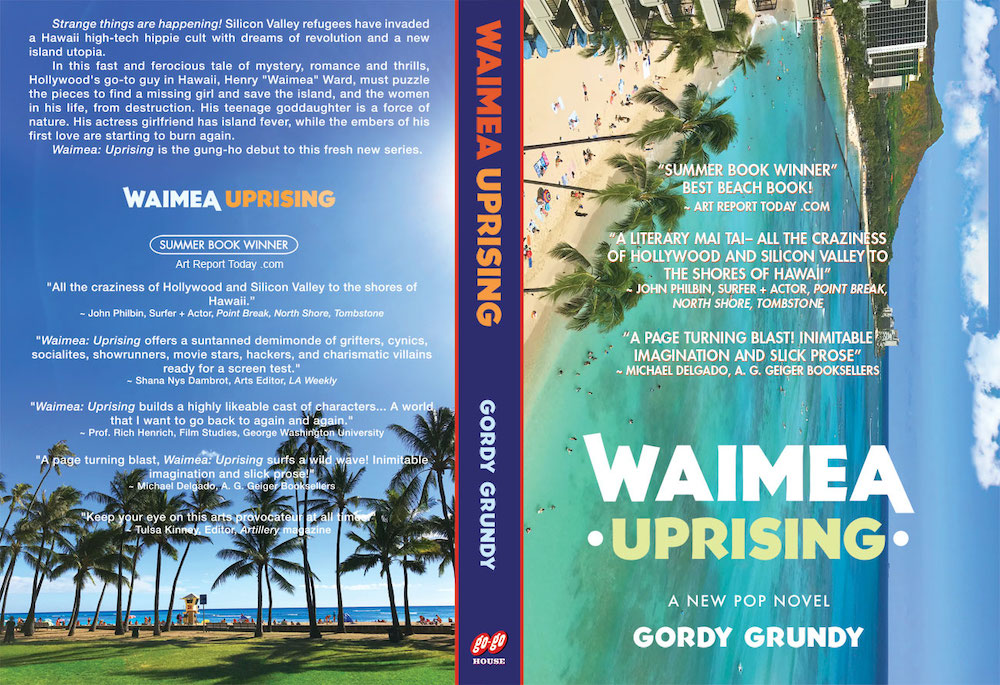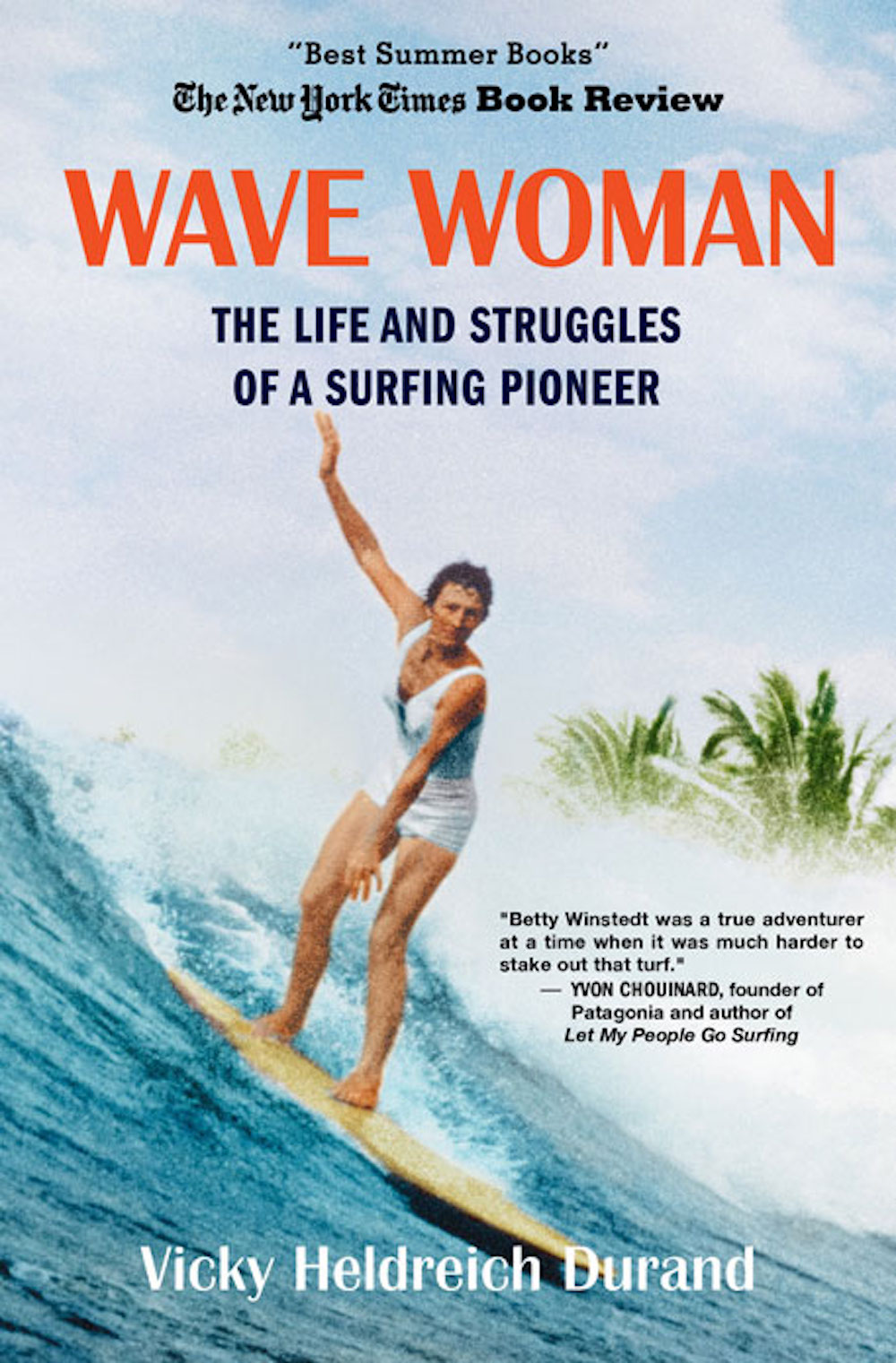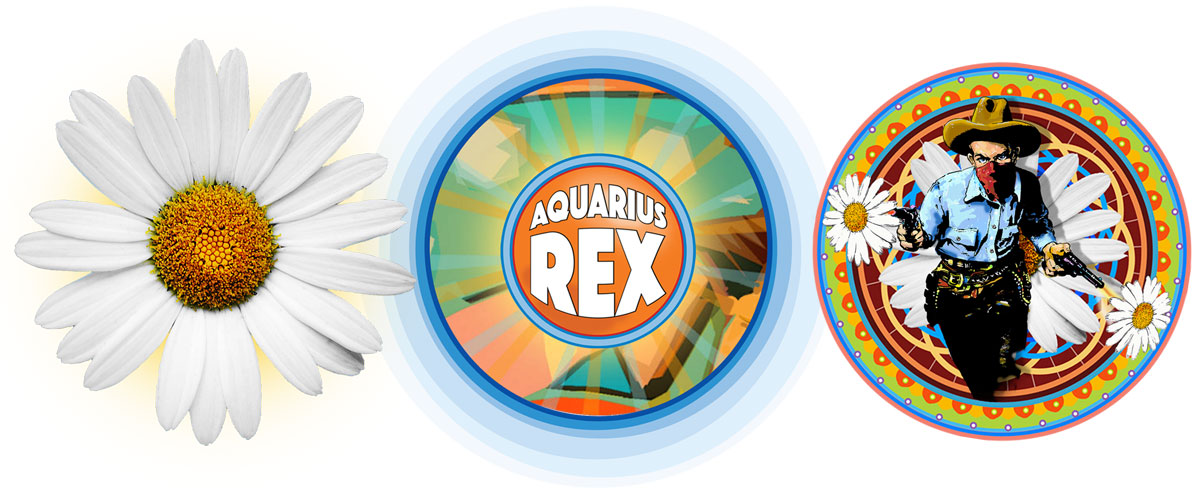Click Here for Part One “Bouncing in the Artist’s Bubble”
The womb of an artist’s bubble reflects one’s spirit; the exoskeleton can expand with joy and contract in pain. A new project ballooned into bliss. I was having a chat at Coffee Talk in Kaimuki with friend Janetta Napp, one of the most interesting and accomplished artists living in Hawai’i. We were arguing about modern fiction, plotting and characterization. We both have great respect for the well-devised narrative. In my louche SoCal thinking, I concluded plot was less important than an author’s skill to “just keep it interesting.”
No gauntlet was thrown down, but it stuck as a challenge. I had never scribed a work longer than a novella. Napp was encouraging, and rumination, like water on concrete, is invasive. A character sketch turned into a chapter. As a story developed and ran off with itself, I was all in.

Screenwriting is a matter of permissions. That creative bubble must offer an open door, as film is a highly collaborative medium. True fiction invites no one but the author. This project, the narrative challenge, absorbed my life. I cannot recall when I’ve ever had as much fun. My bubble was getting crowded with characters that I loved; I could not imagine hanging out with anyone else.
Just keep it interesting. Waimea Uprising is a pop novel, devised with the sole intention of fun and amusement. Someone else can write the Great Hawai’i Novel. I wanted to write the best beach book ever.
The project was absorbing. As the narrative was forcing a conclusion, I could not stop. Never a borrower or lender, I held my hand out and a client-friend loaned me rent and ramen money.
The End. The book was appropriately well-designed. Reviews were good! The 544-page novel attracted no attention but my own.

Creative satisfaction has no scale. Winning a Pulitzer and mixing a perfect color are equally great victories. Working for others can often be as satisfying as producing for oneself. I had to quickly focus on jobs and income. All projects are valuable and one in particular was a gas. The female winner of the 1957 Makaha International was publishing a book about her mother, a pioneering OG surfer. Vicky Durand’s Wave Woman: The Life and Struggles of a Surfing Pioneer was a success. The New York Times Book Review told me so.
Waves kiss the shore. The trades blow. From Point Panic, one can watch the sun set behind the horizon, and a few months later, fall behind the Waianae mountains. Nature’s cycle keeps repeating. The creative bubble keeps bouncing.
There is but one thread that connects all of my friendships and that bond is laughter. Tulsa Kinney is the editor and publisher of Artillery, a sixteen-year-old, print art magazine devoted to Los Angeles. This feisty redhead can always make me howl and I would move heaven and earth for her. Five years ago, the American advertising market was melting down as Google and Mark Zuckerberg were snatching the milk from smaller babies. To this day, their larceny, unabated, has not stopped. What could I cook up that might help Tulsa?
I sat down to take a hard, cold look at our worldwide arts and culture media. I expected the survey would be lengthy. The bulb lit with a fast pop, or in contemporary parlance, it was an OMG moment.
The resulting concept was outside of Artillery’s Los Angeles purview. I wadded up a small forest of notes and tossed them. The paper basketball hit the rim and bounced to the floor.
I could not let go of the concept… I could not imagine our civilization without such a grand resource.
My hard look produced several salient takeaways. 1) Our planet earth does not need another glossy, chic art rag. 2) The fine art media is an integral lever of the economic worldwide art machine, valued at way over $50 Billion in 2021. The target market of the arts media is focused on the engine’s fuel, the One Percent who buy, sell, ship, store, and auction art. 3) The fine art media is not in the business of sharing the simple joys, love and appreciation of art with the little people: it just doesn’t pay.
Wary of the concept of a comprehensive arts news platform, friends and family advised that K-Pop, Porn or Pickleball were more popular subject matters for a platform. I countered, “Oh, yeah?”
Fact: Over the last 30 years, the fine arts have been taught throughout the American educational system. Museum attendance has risen dramatically. There is a huge market, predisposed to the arts, waiting to be entertained. (Trust me, my artworld brothers and sisters are far more fascinating than the Kardashians.) Friends and family listened politely and patted my knee, whispering, “Will ya just think about K-Pop, Porn or Pickleball as a topic?”
The shining lightbulb that hovered above my bubble was most influenced by the Drudge Report, one of the stranger success stories of modern publishing. While creating our own content, my behemoth would aggregate news stories, supporting efforts like Artillery, Glasstire from Texas, the Hawai’i Review of Books or Burnaway that covers the Deep South. We would offer the best of the world, all on one fast-to-download web page.

An artist’s imagination may be limitless; our tool kit is not. Damien Hirst can manifest an ancient shipwreck and Robert Smithson can spiral a jetty. Most artists work with what we have, like Francis Ford Coppola who will self-finance his next $125 million film Megalopolis.
Like Francis, I possessed all of the hard skills needed to produce such an internet arts media platform. It did not require the privilege of capital; I could wiggle the start-up costs. Grit and a gallon of hope could pull this thing off.
Art Report Today began to publish daily on April Fool’s Day 2019. The site is the most comprehensive arts and culture news platform in the world. We leapt to the head of the class with an average of 170 articles, images and videos in each issue. Our free weekly newsletter, the “Sunday Lounge,” entertains more than 22,000 as of this writing. The artist’s inspiration is the thread throughout. Art Report Today presents a deep beautiful dive into our worldwide arts and culture.
In the first year, the effort was rattled with growing pains and the idiotic advice to seduce venture capital. The pandemic in Years Two and Three stifled any significant progress. Today, the dark clouds of Covid are parting to reveal more political madness, economic stagnation, fresh inflation and mad despots with fingers on the triggers. Who said art-making was easy?
The Art Report Today bubble floats and bounces above the red earth of Hawai’i and the cool blue of Mother Pacific. Every day I am blessed with a sight, sound or smell of such incredible beauty that I literally stop in my tracks. Every other day, I look at Diamond Head and gasp, just like the first time I ever saw her.
Success is always double-edged. Should Art Report Today attract more attention than my own, I will gladly say aloha to the islands.
Come what may, boon or bane, the creative bubble must always be fought for and preserved.
__________________________
Gordy Grundy is an American artist and arts writer. Born by the beach, he has been influenced by sunny flights of SoCal fancy, the bold stroke and the grand gesture. He makes art daily and shows rarely. As an arts writer and columnist, he has written for the Los Angeles Times, the Huffington Post, Artillery magazine, LA Weekly, ArtNews and many others.
This essay first appeared in the Hawai’i Review of Books.
Special thanks to Editor Don Wallace.
Images were created by the author.
Photo of Diamond Head courtesy of Daniel Ramirez.



















0 Comments